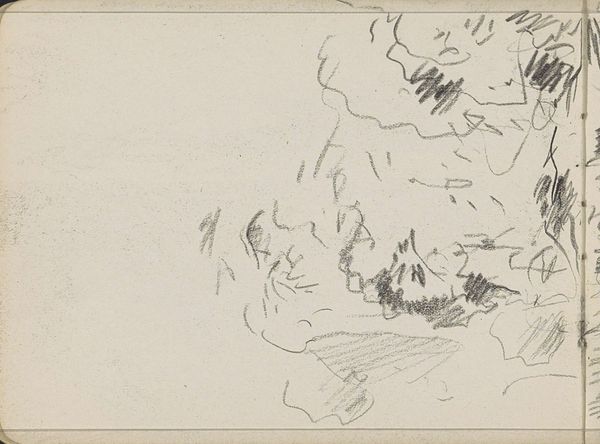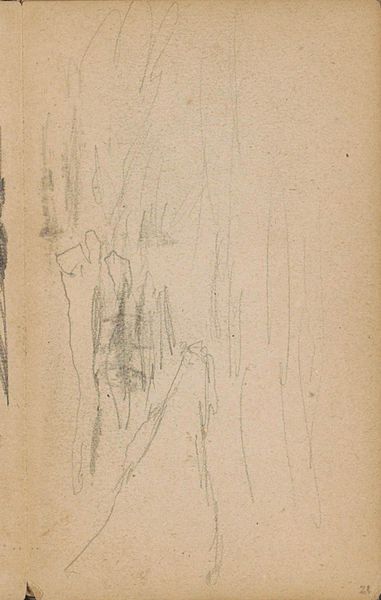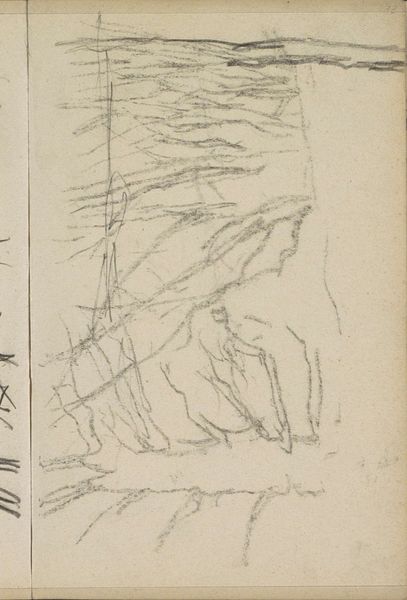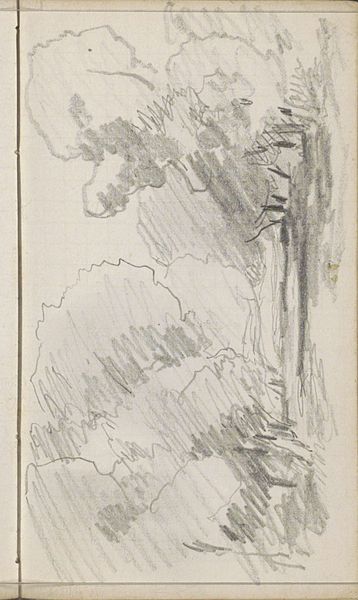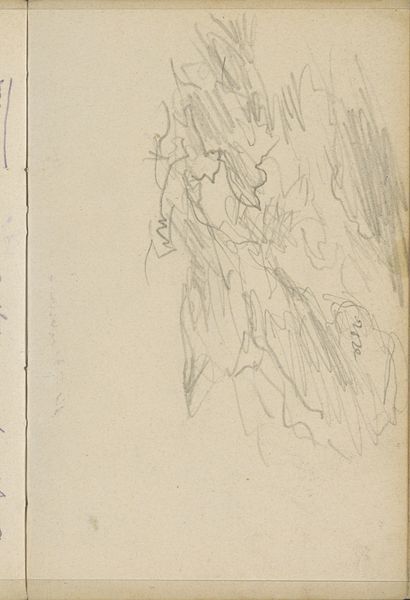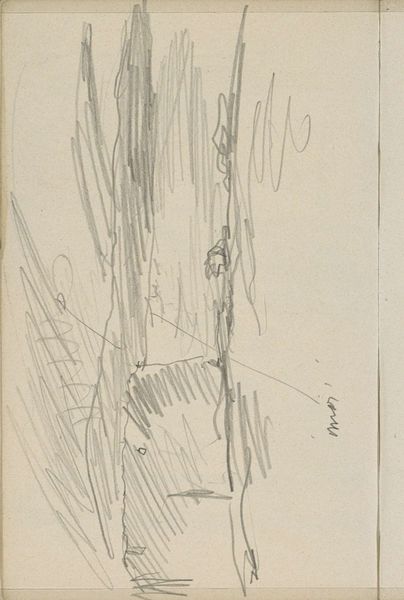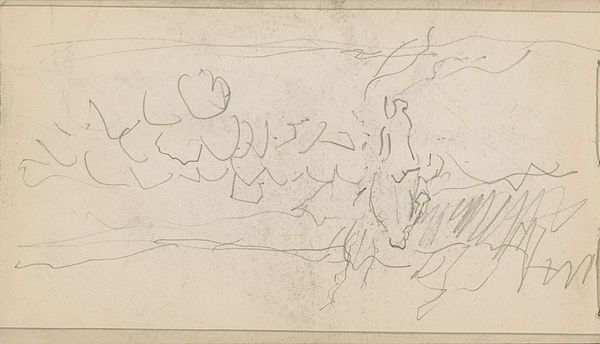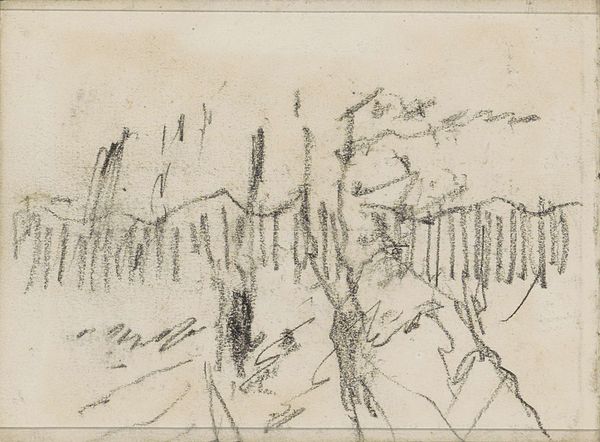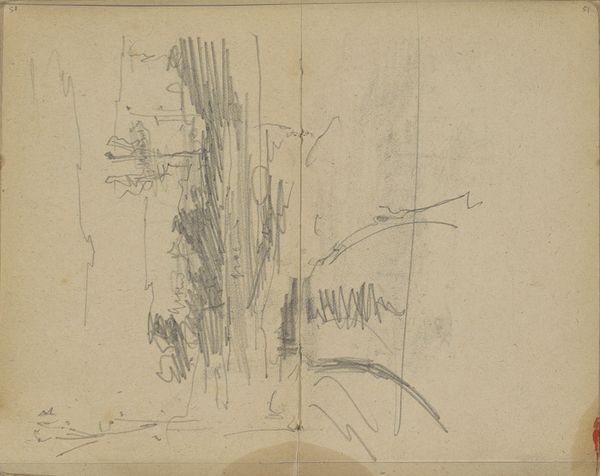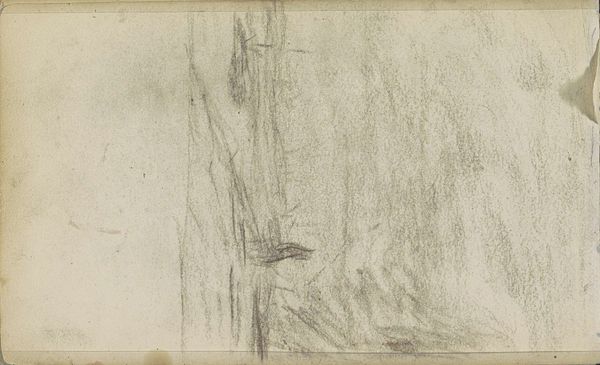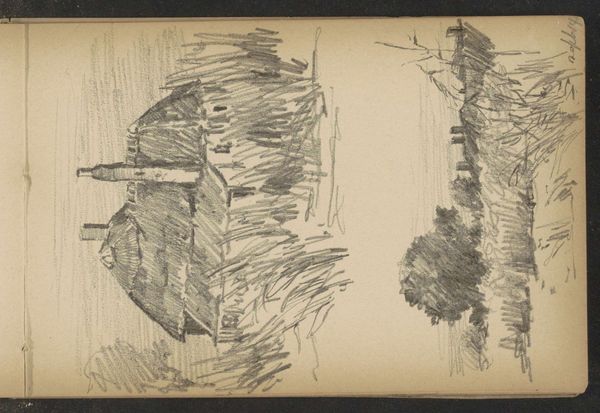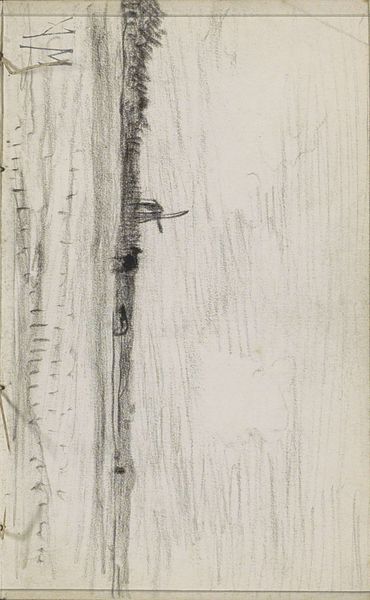
drawing, paper, pencil, graphite
#
drawing
#
pencil sketch
#
landscape
#
paper
#
pencil
#
graphite
Copyright: Rijks Museum: Open Domain
Editor: Here we have "Landschap," a landscape drawing by Johan Antonie de Jonge, likely made between 1901 and 1927 using pencil and graphite on paper. It feels raw and immediate, almost like a fleeting impression. What strikes you about this piece? Curator: The most compelling element is the artist's deployment of line. Observe how the diagonal hatching dominates the composition, creating a palpable sense of texture and volume. De Jonge uses this repetitive stroke not to delineate objects precisely but to evoke the very feeling of dense foliage. Do you perceive the interplay between the negative space and the build-up of graphite? Editor: Yes, now that you mention it, the negative space almost becomes as important as the marks themselves. It provides a sort of breath or light within the density of the drawing. What is the effect of the repeated strokes here? Curator: Indeed. Consider how the varying pressure and direction of each stroke contribute to the overall rhythm and dynamism. The artist eschews meticulous detail in favour of conveying an emotional response to the landscape. In doing so, the linear composition creates not merely a picture, but also the optical and emotional tension within this depicted reality. Does the work still speak as 'landscape' to you, even in its abstraction? Editor: I see it now. Initially, it seemed unfinished, but understanding how the formal elements create depth and movement clarifies its intent. It’s a study of light and shadow, not just a literal depiction. Curator: Precisely. De Jonge invites us to engage with the materiality of the drawing itself, appreciating the potential of simple graphite marks to generate a complex sensory experience. It reminds us to examine our assumptions and challenge how an artwork conveys an understanding of reality.
Comments
No comments
Be the first to comment and join the conversation on the ultimate creative platform.


